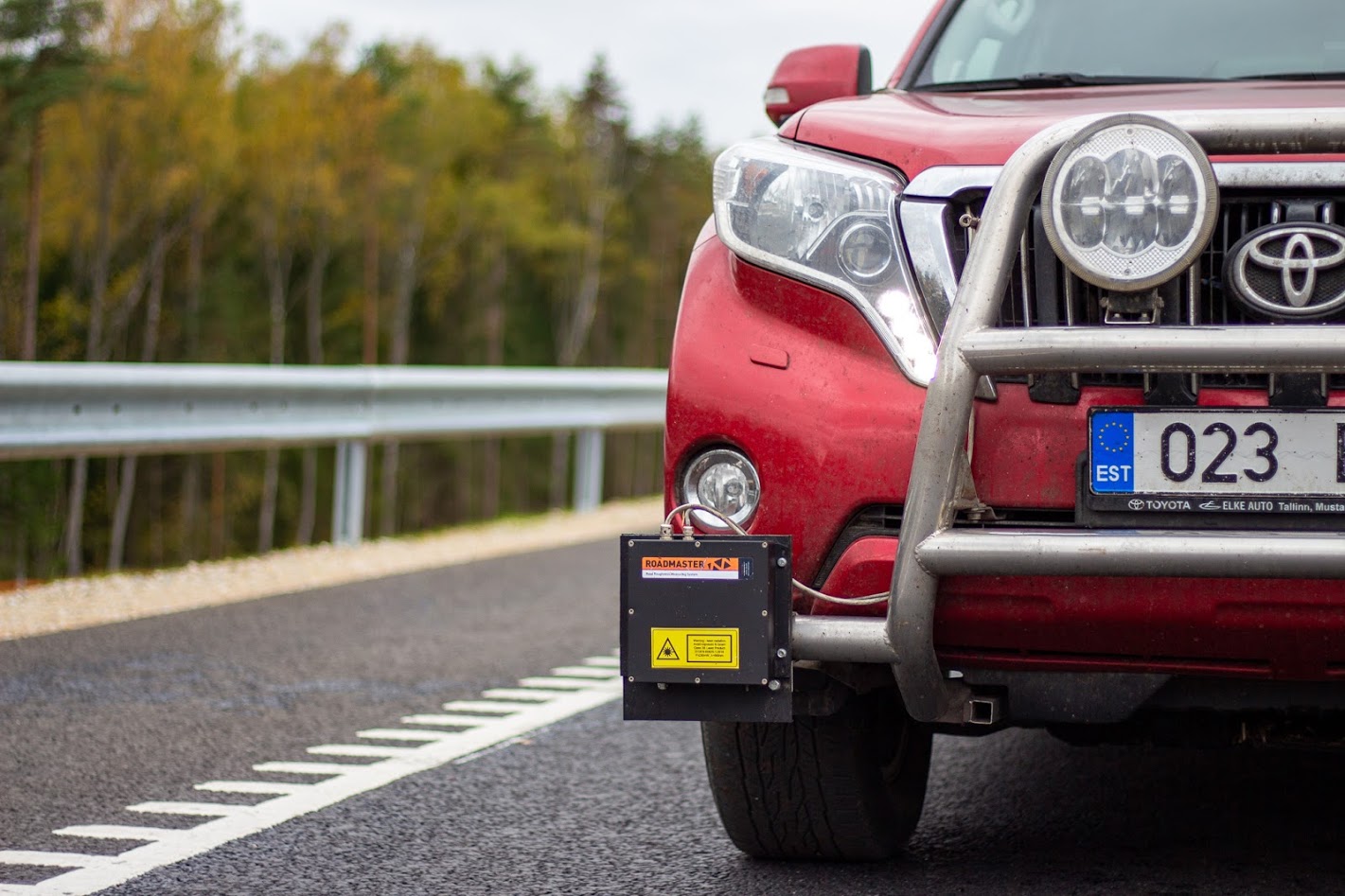
- Services
- Road measurements
- Road bearing capacity (FWD)
- Roughness (IRI & IRI4)
- Rut Depth Measurements
- Pavement Skid Resistance Measurements
- Pavement thermal measurements (TGS)
- ITS & road information systems
- Road and Traffic Cameras
- Road Weather and Road Weather Stations
- Traffic counting
- Variable Message Signs
- Weigh-in-motion
- Trainings
- Contact
ENG
- Services
- Road measurements
- Road bearing capacity (FWD)
- Roughness (IRI & IRI4)
- Rut Depth Measurements
- Pavement Skid Resistance Measurements
- Pavement thermal measurements (TGS)
- ITS & road information systems
- Road and Traffic Cameras
- Road Weather and Road Weather Stations
- Traffic counting
- Variable Message Signs
- Weigh-in-motion
- Trainings
- Contact
ENG
SERVICES
Road information center
Consultations and Studies
- Expert Assessments
- Construction Supervision
Road Information Systems
Testing and Measurement
- Laboratory Tests
- Road measurements
- Ground Penetrating Radar
- Pavement Skid Resistance Measurements
- Residual voids content (GPR)
- Transverse profile & cross slope
- Rut Depth Measurements
- Roughness (IRI & IRI4)
- 3D Road Imaging System
- Pavement thermal measurements (TGS)
- Pavement layer thickness (induction method)
- Assessment and analysis of the condition of bridges
- ELTRIP road distance and friction meters
- Ground Penetrating Radar
Certification Department
Roughness (IRI & IRI4)
Pavement roughness directly influences road user costs and it’s one of the main parameters of road condition assessment. This parameter helps to evaluate the costs caused by the road network condition and the economical benefits of reconstruction works. Pavement roughness is characterized by International Roughness Index (IRI). This is an internationally approved value that characterizes ride comfort and that is calculated using the sum of vertical oscillations of the vehicle chassis per road section (generally 100 m), its unit is mm/m. IRI is calculated using an algorithm generated by the World Bank.
Roughness values for a road network are classified according to the ride comfort as follows:
Pavement condition Characteristics (ride comfort and roughness impact) Pavement roughness IRI (mm/m) Very good Smooth pavement Good driving conditions, speed limit tends to be exceeded. ≤ 1,39 Good Generally smooth surface; a few longitudinal irregularities and isolated cases of perpendicular irregularities that have generally no effect on ride comfort. Easy to exceed the speed limit. 1,4 – 2,69 Fair Pavement is relatively uneven. A few slight bumps are present. Driving speed is generally close to the speed limit, attention must be paid to road surface while driving. 2,7 – 4,19 Poor Road surface is uneven, several slight bumps and a few large bumps are present. Driving speed varies, driver has to look for the best trajectory, driving requires concentration. 4,2 – 5,59 Very poor Road surface is very uneven, several slight and large bumps are present. Driving is uncomfortable, driving speed generally remains below the speed limit. Pavement defects and irregularities need to be avoided. Driving requires concentration. ≥ 5,6 The best average values from the first measurement of a new pavement start from 0.6 mm/m.
Along with roughness measurements it’s possible to determine also the pavement texture, or its macro- and megatexture to be more precise. Pavement texture characterizes the road surface and it has a direct influence upon traffic safety (skid resistance), ride comfort (noise and irregularities), user costs (fuel costs), and construction quality (segregation, sweating). The pavement texture is defined as vertical irregularities on a pavement surface that deviate from an ideal, perfectly flat surface. World Road Association (PIARC) has established standard categories of texture, classified by wavelength These categories include microtexture (wavelengths up to 0.5 mm), macrotexture (0.5 to 50 mm), megatexture (50 to 500 mm), and roughness (wavelengths 500 mm – 50 m).
We use the Laser Texture Meter LTM-1 laser device to measure the flatness and texture of road surfaces. The device undergoes annual inspection and calibration at the manufacturer. In addition, we regularly participate in comparison tests organized by VTI (Swedish National Road and Transport Research Institute) on Swedish roads, which ensures that the measurements we make are comparable to the measurements made in Finland and Sweden.
Seda veebilehte külastades ja kasutades nõustud sellega, et AS Teede Tehnokeskus kasutab küpsiseid. Nõustun REJECTManage consentPrivacy Overview
This website uses cookies to improve your experience while you navigate through the website. Out of these, the cookies that are categorized as necessary are stored on your browser as they are essential for the working of basic functionalities of the website. We also use third-party cookies that help us analyze and understand how you use this website. These cookies will be stored in your browser only with your consent. You also have the option to opt-out of these cookies. But opting out of some of these cookies may affect your browsing experience.Necessary cookies are absolutely essential for the website to function properly. This category only includes cookies that ensures basic functionalities and security features of the website. These cookies do not store any personal information.Any cookies that may not be particularly necessary for the website to function and is used specifically to collect user personal data via analytics, ads, other embedded contents are termed as non-necessary cookies. It is mandatory to procure user consent prior to running these cookies on your website.
